Principles of Pediatric Nursing: Caring for Children 7th Edition by Jane Ball, ISBN-13: 978-0134257013
Original price was: $50.00.$14.99Current price is: $14.99.
Principles of Pediatric Nursing: Caring for Children 7th Edition by Jane Ball, ISBN-13: 978-0134257013
[PDF eBook eTextbook]
- Publisher: Pearson; 7th edition (October 24, 2016)
- Language: English
- 1080 pages
- ISBN-10: 9780134257013
- ISBN-13: 978-0134257013
Due to its large file size, this book may take longer to download.
For pediatric nursing courses in associate and baccalaureate degree programs.
Help readers learn to think like nurses and visualize how to care for children.
To prepare today’s students to begin thinking and acting like nurses, Principles of Pediatric Nursing, Seventh Edition presents a foundation of core pediatric nursing principles with an emphasis on growth and development, family-centered care, and health promotion and maintenance. Nursing students often bring an Adult Health mindset to Pediatric Nursing, which can obscure the special considerations needed to effectively care for children. Principles of Pediatric Nursing helps students visualize how to care for children and understand the ways caring for pediatric patients is similar to, and different from, adult patients.
Table of Contents:
Principles of Pediatric Nursing Caring for Children
About the Authors
Thank You!
Preface
Preparation for Nursing Excellence
Realities of Pediatric Nursing
Organization and Integrated Themes
Resources for Student Success
Resources for Faculty Success
Features to Help You Use This Textbook Successfully
Contents
Chapter 1 Nurse’s Role in Care of the Child: Hospital, Community, and Home
Learning Outcomes
Pediatric Healthcare Overview
Role of the Nurse in Pediatrics
Direct Nursing Care
Patient Education
Patient Advocacy
Case Management
Research
Nursing Process in Pediatric Care
Clinical Reasoning
Evidence-Based Practice
Settings for Pediatric Nursing Care
Contemporary Climate for Pediatric Nursing Care
Culturally Sensitive Care
Family-Centered Care
Pediatric Health Statistics
Mortality
Morbidity
Healthcare Issues
Healthcare Financing
Healthcare Technology
Legal Concepts and Responsibilities
Regulation of Nursing Practice
Accountability and Risk Management
Accountability
Patient Safety
Risk Management
Legal and Ethical Issues in Pediatric Care
Informed Consent
Child Participation in Healthcare Decisions
Child’s Rights Versus Parents’ Rights
Confidentiality
Patient Self-Determination Act
Ethical Issues
Withholding or Withdrawing Medical Treatment
Genetic Testing of Children
Organ Transplantation Issues
Partnering With Families
Chapter Highlights
References
Chapter 2 Family-Centered Care and Cultural Considerations
Learning Outcomes
Family and Family Roles
Family-Centered Care
History of Family-Centered Care
Promoting Family-Centered Care
Family Composition
Family Functioning
Transition to Parenthood
Parental Influences on the Child
Family Size
Sibling Relationships
Parenting
Authoritarian Parents
Authoritative Parents
Permissive Parents
Indifferent Parents
Parent Adaptability
Assessing Parenting Styles
Discipline and Limit Setting
Special Family Considerations
Divorce and Its Effects on Children
Stepparenting
Foster Care
Foster Parenting
Health Status of Foster Children
Transition to Permanent Placement
Adoption
Legal Aspects of Adoption
Preparation for Adoption
Responses by Adopted Children
International Adoptions
Family Theories
Family Development Theory
Family Systems Theory
Family Stress Theory
Family Assessment
Family Stressors
Family Strengths
Collecting Data for Family Assessment
Family Assessment Tools
Genogram
Family Ecomap
Calgary Family Assessment Model
Home Observation for Measurement of the Environment (HOME)
Cultural Considerations
Cultural Assessment
Cultural Practices That Influence Health Care
Family Roles and Organization
Communication
Time Orientation
Nutrition
Health Beliefs, Approaches, and Practices
Complementary and Alternative Modalities
Safety Issues Concerning CAM Therapies
Chapter Highlights
References
Chapter 3 Genetic and Genomic Influences
Learning Outcomes
Partnering With Families: Meeting the Standard of Genetic Nursing Care Delivery
Impact of Genetic Advances on Health Promotion and Health Maintenance
Genetic Basics
Cell Division
Chromosomal Alterations
Alterations in Chromosome Number
Mosaicism
Structural Chromosomal Alterations
Inversion
Deletion and Duplication
Translocation
Genes
Function and Distribution of Genes
Mitochondrial Genes
Human Genetic Variation
Gene Alterations and Disease
Gene Alterations That Decrease Risk of Disease
Principles of Inheritance
Classic Mendelian Patterns of Inheritance
Dominant Versus Recessive Disorders
Autosomal Dominant
Inheritance Risk in Autosomal Dominant Conditions
Autosomal Recessive
Inheritance Risk in Autosomal Recessive Conditions
X-Linked
Inheritance Risk in X-Linked Conditions
X Inactivation
Y-Linked Disorders
Variability in Classic Mendelian Patterns of Inheritance
Penetrance
Variable Expressivity
New Mutation
Anticipation
Imprinting
Uniparental Disomy
Multifactorial Inheritance
Collaborative Care
Diagnostic Procedures
Recommendations for Genetic Testing
Categories of Genetic Tests
Diagnosing Chromosomal Alterations
Diagnosing Gene Alterations
Quality and Accuracy of Genetic Tests
Visions for the Future
Chapter Highlights
References
Chapter 4 Growth and Development
Learning Outcomes
Principles of Growth and Development
Major Theories of Development
Freud’s Theory of Psychosexual Development
Theoretical Framework
Stages
Oral (Birth to 1 Year)
Anal (1 to 3 Years)
Phallic (3 to 6 Years)
Latency (6 to 12 Years)
Genital (12 Years to Adulthood)
Nursing Application
Erikson’s Theory of Psychosocial Development
Theoretical Framework
Stages
Trust Versus Mistrust (Birth to 1 Year)
Autonomy Versus Shame and Doubt (1 to 3 Years)
Initiative Versus Guilt (3 to 6 Years)
Industry Versus Inferiority (6 to 12 Years)
Identity Versus Role Confusion (12 to 18 Years)
Nursing Application
Piaget’s Theory of Cognitive Development
Theoretical Framework
Stages
Sensorimotor (Birth to 2 Years)
Use of Reflexes (Birth to 1 Month)
Primary Circular Reactions (1 to 4 Months)
Secondary Circular Reactions (4 to 8 Months)
Coordination of Secondary Schemes (8 to 12 Months)
Tertiary Circular Reactions (12 to 18 Months)
Mental Combinations (18 to 24 Months)
Preoperational (2 to 7 Years)
Preconceptual Substage
Intuitive Substage
Concrete Operational (7 to 11 Years)
Formal Operational (11 Years to Adulthood)
Nursing Application
Kohlberg’s Theory of Moral Development
Theoretical Framework
Stages
Preconventional (4 to 7 Years)
Conventional (7 to 12 Years)
Postconventional (12 Years and Older)
Nursing Application
Social Learning Theory
Theoretical Framework
Nursing Application
Behaviorism
Theoretical Framework
Nursing Application
Ecologic Theory
Theoretical Framework
Levels/Systems
Microsystem
Mesosystem
Exosystem
Macrosystem
Chronosystem
Nursing Application
Temperament Theory
Theoretical Framework
Nursing Application
Resiliency Theory
Theoretical Framework
Nursing Application
Influences on Development
Infant (Birth to 1 Year)
Physical Growth and Development
Cognitive Development
Psychosocial Development
Play
Personality and Temperament
Communication
Toddler (1 to 3 Years)
Physical Growth and Development
Cognitive Development
Psychosocial Development
Play
Personality and Temperament
Communication
Preschool Child (3 to 6 Years)
Physical Growth and Development
Cognitive Development
Psychosocial Development
Play
Personality and Temperament
Communication
School-Age Child (6 to 12 Years)
Physical Growth and Development
Cognitive Development
Psychosocial Development
Play
Personality and Temperament
Communication
Sexuality
Adolescent (12 to 18 Years)
Physical Growth and Development
Cognitive Development
Psychosocial Development
Activities
Personality and Temperament
Communication
Sexuality
Chapter Highlights
References
Chapter 5 Pediatric Assessment
Learning Outcomes
Anatomic and Physiologic Characteristics of Infants and Children
Obtaining the Child’s History
Communication Strategies
Strategies to Build Rapport with the Family
Careful Listening
Data to Be Collected
Client Information
Physiologic Data
Chief Concern.
Present Illness or Injury.
Past History.
Current Health Status.
Familial and Hereditary Diseases.
Review of Systems.
Psychosocial Data
Newborns
Children
Adolescents
Developmental Status
Developmental Approach to the Examination
Newborns and Infants Under 6 Months of Age
Infants Over 6 Months of Age
Toddlers
Preschoolers
School-Age Children
Adolescents
General Appraisal
Assessing Skin and Hair Characteristics
Inspection of the Skin
Skin Color
Palpation of the Skin
Capillary Refill Time
Skin Lesions
Inspection of the Hair
Palpation of the Hair
Assessing the Head for Skull Characteristics and Facial Features
Inspection of the Head and Face
Palpation of the Skull
Sutures
Fontanelles
Assessing Eye Structures, Function, and Vision
Inspection of the External Eye Structures
EYE Size and Spacing
Eyelids and Eyelashes
Eye Color
Pupils
Assessment of the EYE Muscles
Vision Assessment
Infants and Toddlers
Standardized Vision Charts
Inspection of the Internal Eye Structures
Red Reflex
Assessing the Ear Structures and Hearing
Inspection of the External Ear Structures
Inspection of the Tympanic Membrane
Hearing Assessment
Infants and Toddlers
Preschool and Older Children
Bone and Air Conduction of Sound
Assessing the Nose and Sinuses for Airway Patency and Discharge
Inspection of the External Nose
Palpation of the External Nose
Nasal Patency
Assessment of Smell
Inspection of the Internal Nose
Mucous Membranes and Nasal Septum
Discharge
Inspection of the Sinuses
Assessing the Mouth and Throat for Color, Function, and Signs of Abnormal Conditions
Inspection of the Mouth
Lips
Teeth
Mouth Odors
Gums and Buccal Mucosa
Tongue
Palate
Palpation of the Mouth Structures
Inspection of the Throat
Assessing the Neck for Characteristics, Range of Motion, and Lymph Nodes
Inspection of the Neck
Palpation of the Neck
Lymph Nodes
Trachea
Thyroid
Range of Motion Assessment
Assessing the Chest for Shape, Movement, Respiratory Effort, and Lung Function
Inspection of the Chest
Shape of The Chest
Chest Movement and Respiratory Effort
Respiratory Rate
Palpation of the Chest
Chest Wall
Tactile Fremitus
Auscultation of the Chest
Breath Sounds
Vocal Resonance
Abnormal Breath Sounds
ABNORMAL VOICE SOUNDS
Percussion of the Chest
Assessing the Breasts
Inspection of the Breasts
Palpation of the Breasts
Assessing the Heart for Heart Sounds and Function
Inspection of the Precordium
Palpation of the Precordium
Heart Rate and Rhythm
Auscultation of the Heart
Identifying Heart Sounds
Splitting of the Heart Sounds
Extra Heart Sounds
Venous Hum
Completing the Heart Examination
Palpation of The Pulses
Blood Pressure
Other Signs
Assessing the Abdomen for Shape, Bowel Sounds, and Underlying Organs
Inspection of the Abdomen
Abdominal Movement
Auscultation of the Abdomen
Percussion of the Abdomen
Palpation of the Abdomen
Light Palpation
Deep Palpation
Assessment of the Inguinal Area
Assessing the Genital and Perineal Areas for External Structural Abnormalities
Inspection of the Female External Genitalia
Inspection of the Male Genitalia
Penis
Scrotum
Palpation of the Male Genitalia
Anus and Rectum
Assessing Pubertal Development and Sexual Maturation
Girls
Boys
Sexual Maturity Timeline
Assessing the Musculoskeletal System for Bone and Joint Structure, Movement, and Muscle Strength
Inspection of the Bones, Muscles, and Joints
Palpation of the Bones, Muscles, and Joints
Range of Motion and Muscle Strength Assessment
Range of Motion
Muscle Strength
Posture and Spinal Alignment
POSTURE
Spinal Alignment
Inspection of the Upper Extremities
Inspection of the Lower Extremities
Legs and Feet
Assessing the Nervous System
Cognitive Function
Behavior
Communication Skills
Memory
Level of Consciousness
Cerebellar Function
Balance
Coordination
Gait
Cranial Nerve Function
Sensory Function
Common Newborn Reflexes
Superficial and Deep Tendon Reflexes
Superficial Reflexes
Deep Tendon Reflexes
Performing an Intermittent Examination
Analyzing Data From the Physical Examination
Chapter Highlights
References
Chapter 6 Introduction to Health Promotion and Maintenance
Learning Outcomes
General Concepts
Components of Health Promotion/Health Maintenance Visits
Chapter Highlights
References
Chapter 7 Health Promotion and Maintenance for the Newborn and Infant
Learning Outcomes
Health Promotion and Maintenance for the Newborn and Infant
Early Contacts With the Family
General Observations
Growth and Developmental Surveillance
Nutrition
Physical Activity
Oral Health
Mental and Spiritual Health
Relationships
Disease Prevention Strategies
Injury Prevention Strategies
Chapter Highlights
References
Chapter 8 Health Promotion and Maintenance for the Toddler and Preschooler
Learning Outcomes
Health Promotion and Maintenance for the Toddler and Preschooler
General Observations
Growth and Developmental Surveillance
Nutrition
Physical Activity
Oral Health
Mental and Spiritual Health
Relationships
Disease Prevention Strategies
Injury Prevention Strategies
Chapter Highlights
References
Chapter 9 Health Promotion and Maintenance for the School-Age Child and Adolescent
Learning Outcomes
Health Promotion and Maintenance for the School-Age Child
General Observations
Growth and Developmental Surveillance
Nutrition
Physical Activity
Oral Health
Mental and Spiritual Health
Self-Esteem and Self-Concept
Sexuality and Sexuality Education
Sleep
School
Evaluating Mental Health and Spiritual Health
Relationships
Disease Prevention Strategies
Injury Prevention Strategies
Health Promotion and Maintenance for the Adolescent
General Observations
Growth and Developmental Surveillance
Nutrition
Physical Activity
Oral Health
Mental and Spiritual Health
Relationships
Disease Prevention Strategies
Injury Prevention Strategies
Chapter Highlights
References
Chapter 10 Nursing Considerations for the Child in the Community
Learning Outcomes
Community-Based Health Care
Community Healthcare Settings
Nursing Roles in the Office or Healthcare Center Setting
Educating the Child and Family
Identifying Severely Ill and Injured Children
Emergency Response Planning
Identifying Community Resources
Ensuring a Safe Environment for Children
Nursing Roles in the Specialty Healthcare Setting
Nursing Roles in the School Setting
Preparation for Emergencies
Facilitating a Child’s Return to School
Nursing Roles in the Childcare Setting
Reducing Disease Transmission
Health Promotion and Health Maintenance
Environmental Safety
Emergency Care Planning
Nursing Roles in the Home Healthcare Setting
Assessment of Community Needs and Resources
Community Assessment
Planning and Evaluation
Preparation for Disasters
Clinical Manifestations
Clinical Therapy
Chapter Highlights
References
Chapter 11 Nursing Considerations for the Hospitalized Child
Learning Outcomes
Effects of Hospitalization on Children and Their Families
Children’s Understanding of Health and Illness
Infant
Toddler
Preschooler
School-Age Child
Adolescent
Family Responses to Hospitalization
Family Assessment
Nurse’s Role in the Child’s Adaptation to Hospitalization
Planned Hospitalization
Unexpected Hospitalization
Nursing Care of the Hospitalized Child
Special Units and Types of Care
General Pediatric Care Unit
Short-Stay, Outpatient, and Ambulatory Surgical Units
Emergency Care
Intensive Care Unit
Isolation
Rehabilitation
Parental Involvement and Parental Presence
Preparation for Procedures
Psychologic Preparation
Physical Preparation
Performing the Procedure
Preparation for Surgery
Preoperative Care
Psychosocial Preparation.
Parental Presence During Anesthesia Induction.
Physical Preparation.
Postoperative Care
Postoperative Home Care Instructions
Strategies to Promote Coping and Normal Development of the Hospitalized Child
Rooming In
Child-Life Programs
Therapeutic Play
Infant
Toddler
Preschooler
School-Age Child
Therapeutic Recreation
Strategies to Meet Educational Needs
Child and Family Teaching
Teaching Plans
Teaching for Children With Special Healthcare Needs
Preparation for Home Care
Assessing the Child and Family in Preparation for Discharge
Preparing the Family for Home Care
Preparing Parents to Act as Case Managers
Chapter Highlights
References
Chapter 12 The Child With a Chronic Condition
Learning Outcomes
Overview of Chronic Conditions
Role of the Nurse
The Child With a Newly Diagnosed Chronic Condition
Discharge Planning and Home Care Teaching
Coordination of Care
Community Sites of Care
Office or Health Center
Specialty Referral Centers
Schools
EDUCATIONAL SYSTEM PLANNING
THE CHILD’S RESPONSE TO ENTERING SCHOOL
EDUCATION FOR CHILDREN WHO ARE MEDICALLY FRAGILE
HOME SCHOOLING
TRANSITION TO ADULTHOOD
Home Care
RESPITE CARE
EMERGENCY PREPAREDNESS
Chapter Highlights
References
Chapter 13 The Child With a Life-Threatening Condition and End-of-Life Care
Learning Outcomes
Life-Threatening Illness or Injury
Child’s Experience
Coping Mechanisms
Parents’ Experience of a Child’s Life-Threatening Illness or Injury
The Family in Crisis
Parental Reactions to Life-Threatening Illness or Injury
Shock and Disbelief
Anger and Guilt
Deprivation and Loss
Anticipatory Waiting
Readjustment or Mourning
The Siblings’ Experience
End-of-Life Care
Palliative and Hospice Care
Ethical Issues Surrounding a Child’s Death
Brain Death Criteria
Withdrawal of or Withholding Treatment
Do-Not-Resuscitate Orders
Care of the Dying Child
Awareness of Dying by Developmental Age
Bereavement
Parents’ Reactions
Sudden Death of a Child
Death of a Newborn or Young Infant
Grief and Bereavement
Siblings’ Reactions
Staff Reactions to the Death of a Child
Chapter Highlights
References
Chapter 14 Infant, Child, and Adolescent Nutrition
Learning Outcomes
General Nutrition Concepts
Nutritional Needs
Infancy
Fluid and Macronutrients
Micronutrients
Dental Health
Weaning
Introduction of Complementary Foods
Toddlerhood
Preschool
School Age
Adolescence
Nutritional Assessment
Physical and Behavioral Measurement
Growth Measurement
Additional Physical Measurements
Dietary Intake
Twenty-Four–Hour Recall of Food Intake
Food Frequency Questionnaire
Dietary Screening History
Food Diary
Common Nutritional Concerns
Childhood Hunger
Overweight and Obesity
Food Safety
Common Dietary Deficiencies
Iron
Calcium
Vitamin D
Folic Acid
Protein-Energy Malnutrition
Celiac Disease
Feeding and Eating Disorders
Colic
Pica
Avoidant/Restrictive Food Intake Disorder (Formerly Called Feeding Disorder of Infancy and Early Childhood or Failure to Thrive)
Etiology and Pathophysiology.
Clinical Manifestations.
Clinical Therapy.
Anorexia Nervosa
Etiology and Pathophysiology.
Clinical Manifestations.
Clinical Therapy.
Bulimia Nervosa
Etiology and Pathophysiology.
Clinical Manifestations.
Clinical Therapy.
Food Reactions
Lactose Intolerance
Nutritional Support
Sports Nutrition and Ergogenic Agents
Herbs, Probiotics, and Prebiotics
Health-Related Conditions
Vegetarianism
Enteral Therapy
Total Parenteral Nutrition (TPN)
Chapter Highlights
References
Chapter 15 Pain Assessment and Management in Children
Learning Outcomes
Pain
Misconceptions About Pain in Children
Developmental Aspects of Pain Perception, Memory, and Response
Cultural Influences on Pain
Consequences of Pain
Pain Assessment
Pain History
Pain Assessment Tools
Pain Behavior Scales for Nonverbal Children
Neonatal Infant Pain Scale (NIPS).
The Faces, Legs, Activity, Cry, and Consolability (FLACC) Observational Tool.
Pain Location.
Assessing Children With Intellectual Disability
Self-Report Pain Scales
Faces Pain Rating Scale.
Oucher Scale.
Poker Chip Tool.
Numeric Pain Scale.
Word-Graphic Rating Scale.
Adolescent Pediatric Pain Tool.
Acute Pain
Clinical Manifestations
Physiologic Indicators
Behavioral Indicators
Clinical Therapy
Acetaminophen and Nonsteroidal Anti-Inflammatory Drugs
Opioids
Drug Administration
Patient-Controlled Analgesia.
Regional Pain Management
Nonpharmacologic Methods of Pain Management
Distraction
Guided Imagery
Relaxation Techniques
Breathing Techniques
Cutaneous Stimulation
Hypnosis
Sucrose Solution
Application of Heat and Cold
Electroanalgesia
Acupuncture
Chronic Pain
Clinical Manifestations
Clinical Therapy
Sedation and Analgesia for Medical Procedures
Chapter Highlights
References
Chapter 16 Immunizations and Communicable Diseases
Learning Outcomes
Special Vulnerability of Infants and Children
Public Health and Communicable Diseases
Immunization
Clinical Manifestations
Collaborative Care
Immunization Schedules
Improving Immunization Rates
Vaccine Injury Compensation
Communicable Diseases in Children
Clinical Manifestations
Fever
Fever Management
Antibiotic Use
Sepsis and Septic Shock
Emerging Infection Control Threats
Chapter Highlights
References
Chapter 17 Social and Environmental Influences on the Child
Learning Outcomes
Basic Concepts
Social Influences on Child Health
Poverty
Stress
Families
School and Child Care
Community
Culture
Lifestyle Activities and Their Influence on Child Health
Tobacco Use
Alcohol Use
Drug Use
Etiology and Pathophysiology
Clinical Manifestations
Clinical Therapy
Physical Inactivity and Sedentary Behavior
Injury and Protective Equipment
Body Art
Sexual Orientation
Effects of Violence
Schools and Communities
Bullying
Incarceration
Hazing
Domestic Violence
Dating Violence
Child Abuse
Physical Abuse
Physical Neglect
Abandoned Babies
Emotional Abuse
Emotional Neglect
Sexual Abuse
Etiology and Pathophysiology
Clinical Manifestations
Clinical Therapy
Münchausen Syndrome by Proxy (Factitious Disorder)
Environmental Influences on Child Health
Environmental Contaminants
Poisoning
Clinical Manifestations
Clinical Therapy
Ingestion of Foreign Objects
Lead Poisoning
Clinical Manifestations
Clinical Therapy
Chapter Highlights
References
Chapter 18 Alterations in Fluid, Electrolyte, and Acid–Base Balance
Learning Outcomes
Fluid Volume Imbalances
Extracellular Fluid Volume Imbalances
Extracellular Fluid Volume Deficit (Dehydration)
Etiology and Pathophysiology
Clinical Manifestations
Clinical Therapy
Extracellular Fluid Volume Excess
Interstitial Fluid Volume Excess (Edema)
Electrolyte Imbalances
Sodium Imbalances
Hypernatremia
Hyponatremia
Etiology and Pathophysiology
Clinical Manifestations
Clinical Therapy
Potassium Imbalances
Hyperkalemia
Etiology and Pathophysiology
Clinical Manifestations
Clinical Therapy
Hypokalemia
Etiology and Pathophysiology.
Clinical Manifestations
Clinical Therapy
Calcium Imbalances
Hypercalcemia
Etiology and Pathophysiology
Clinical Manifestations
Clinical Therapy
Hypocalcemia
Etiology and Pathophysiology
Clinical Manifestations
Clinical Therapy
Magnesium Imbalances
Hypermagnesemia
Hypomagnesemia
Clinical Assessment of Fluid and Electrolyte Imbalance
Acid–Base Imbalances
Respiratory Acidosis
Etiology and Pathophysiology
Clinical Manifestations
Clinical Therapy
Respiratory Alkalosis
Metabolic Acidosis
Etiology and Pathophysiology
Clinical Manifestations
Clinical Therapy
Metabolic Alkalosis
Mixed Acid–Base Imbalances
Chapter Highlights
References
Chapter 19 Alterations in Eye, Ear, Nose, and Throat Function
Learning Outcomes
Disorders of the Eye
Infectious Conjunctivitis
Periorbital Cellulitis
Visual Disorders
Color Blindness
Retinopathy of Prematurity
Etiology and Pathophysiology
Clinical Manifestations
Clinical Therapy
Visual Impairment
Injuries of the Eye
Disorders of the ear
Otitis Media
Etiology and Pathophysiology
Clinical Manifestations
Clinical Therapy
Otitis Externa
Hearing Impairment
Etiology and Pathophysiology
Clinical Manifestations
Clinical Therapy
Injuries of the Ear
Disorders of the Nose and throat
Epistaxis
Nasopharyngitis
Sinusitis
Pharyngitis
Tonsillitis and Adenoiditis
Etiology and Pathophysiology
Clinical Manifestations
Clinical Therapy
Evaluation
Disorders of the Mouth
Chapter Highlights
References
Chapter 20 Alterations in Respiratory Function
Learning Outcomes
Respiratory Distress and Respiratory Failure
Foreign-Body Aspiration
Etiology and Pathophysiology
Clinical Manifestations
Clinical Therapy
Respiratory Failure
Clinical Therapy
Apnea
Apparent Life-Threatening Event (ALTE)
Obstructive Sleep Apnea
Sudden Infant Death Syndrome
Croup Syndromes
Lower Airway Disorders
Bronchitis
Bronchiolitis and Respiratory Syncytial Virus
Etiology and Pathophysiology
Clinical Manifestations
Clinical Therapy
Pneumonia
Tuberculosis
Etiology and Pathophysiology
Clinical Manifestations
Clinical Therapy
Chronic Lung Conditions
Bronchopulmonary Dysplasia (Chronic Lung Disease)
Etiology and Pathophysiology
Clinical Manifestations
Clinical Therapy
Evaluation
Asthma
Etiology and Pathophysiology
Clinical Manifestations
Clinical Therapy
Acute Asthma Episodes.
Exercise-Induced Asthma.
Severe Asthma Episodes.
Cystic Fibrosis
Etiology and Pathophysiology
Clinical Manifestations
Clinical Therapy
Injuries of the Respiratory System
Smoke-Inhalation Injury
Blunt Chest Trauma
Pulmonary Contusion
Pneumothorax
Chapter Highlights
References
Chapter 21 Alterations in Cardiovascular Function
Learning Outcomes
Congenital Heart Disease
Etiology and Pathophysiology
Clinical Manifestations
Clinical Therapy
Congenital Heart Defects That Increase Pulmonary Blood Flow
Etiology and Pathophysiology
Clinical Manifestations
Clinical Therapy
Defects Causing Decreased Pulmonary Blood Flow and Mixed Defects
Etiology and Pathophysiology
Defects Causing Decreased Pulmonary Blood Flow
Mixed Defects
Clinical Manifestations
Defects Causing Decreased Pulmonary Blood Flow
Mixed Defects
Clinical Therapy
Hypoxic Episodes
Infective Endocarditis
Outcomes and Prognosis
Defects Obstructing Systemic Blood Flow
Etiology and Pathophysiology
Clinical Manifestations
Clinical Therapy
Congestive Heart Failure
Etiology and Pathophysiology
Clinical Manifestations
Clinical Therapy
Acquired Heart Diseases
Cardiomyopathy
Heart Transplantation
Pulmonary Artery Hypertension
Infective Endocarditis
Acute Rheumatic Fever
Kawasaki Disease
Etiology and Pathophysiology
Clinical Manifestations
Clinical Therapy
Cardiac Arrhythmias
Bradycardia
Supraventricular Tachycardia
Long QT Syndrome
Dyslipidemia
Hypertension
Clinical Therapy
Injuries of the Cardiovascular System
Shock
Hypovolemic Shock
Etiology and Pathophysiology
Clinical Manifestations
Clinical Therapy
Distributive Shock
Obstructive Shock
Cardiogenic Shock
Myocardial Contusion
Commotio Cordis
Chapter Highlights
References
Chapter 22 Alterations in Immune Function
Learning Outcomes
Immunodeficiency Disorders
B-Cell and T-Cell Disorders
Severe Combined Immunodeficiency Disease
Etiology and Pathophysiology
Clinical Manifestations
Clinical Therapy
Wiskott-Aldrich Syndrome
Human Immunodeficiency Virus and Acquired Immune Deficiency Syndrome
Etiology and Pathophysiology
Clinical Manifestations
Clinical Therapy
Autoimmune Disorders
Systemic Lupus Erythematosus
Etiology and Pathophysiology
Clinical Manifestations
Clinical Therapy
Juvenile Idiopathic Arthritis
Etiology and Pathophysiology
Clinical Manifestations
Clinical Therapy
Allergic Reactions
Latex Allergy
Graft-Versus-Host Disease
Chapter Highlights
References
Chapter 23 Alterations in Hematologic Function
Learning Outcomes
Anemias
Iron Deficiency Anemia
Normocytic Anemia
Sickle Cell Disease
Etiology and Pathophysiology
Clinical Manifestations
Clinical Therapy
Thalassemias
Hereditary Spherocytosis
Aplastic Anemia
Bleeding Disorders
Hemophilia
Etiology and Pathophysiology
Clinical Manifestations
Clinical Therapy
Von Willebrand Disease
Disseminated Intravascular Coagulation
Immune Thrombocytopenic Purpura
Hematopoietic Stem Cell Transplantation
Chapter Highlights
References
Chapter 24 The Child With Cancer
Learning Outcomes
Childhood Cancer
Incidence
Etiology and Pathophysiology
External Stimuli
Immune System and Gene Abnormalities
Chromosomal Abnormalities
Clinical Manifestations
Diagnostic Tests
Clinical Therapy
Surgery
Chemotherapy
Radiation
Biotherapy
Bone Marrow and Hematopoietic Stem Cell Transplantation
Complementary Therapies
End-of-Life Care
Special Issues in Childhood Cancer
Oncologic Emergencies
Metabolic emergencies.
Hematologic emergencies.
Space-occupying lesion.
Psychosocial Needs
Solid Tumors
Brain Tumors
Etiology and Pathophysiology
Clinical Manifestations
Clinical Therapy
Neuroblastoma
Etiology and Pathophysiology
Clinical Manifestations
Clinical Therapy
Wilms Tumor (Nephroblastoma)
Etiology and Pathophysiology
Clinical Manifestations
Clinical Therapy
Bone Tumors
Osteosarcoma
Etiology and Pathophysiology
Clinical Manifestations
Clinical Therapy
Ewing Sarcoma
Leukemia
Etiology and Pathophysiology
Clinical Manifestations
Clinical Therapy
Soft-Tissue Tumors
Hodgkin Disease
Etiology and Pathophysiology
Clinical Manifestations
Clinical Therapy
Non-Hodgkin Lymphoma
Rhabdomyosarcoma
Retinoblastoma
Chapter Highlights
References
Chapter 25 Alterations in Gastrointestinal Function
Learning Outcomes
Structural Defects
Cleft Lip and Cleft Palate
Etiology and Pathophysiology
Clinical Manifestations
Clinical Therapy
Esophageal Atresia and Tracheoesophageal Fistula
Etiology and Pathophysiology
Clinical Manifestations
Clinical Therapy
Pyloric Stenosis
Etiology and Pathophysiology
Clinical Manifestations
Clinical Therapy
Gastroesophageal Reflux
Omphalocele and Gastroschisis
Intussusception
Etiology and Pathophysiology
Clinical Manifestations
Clinical Therapy
Volvulus
Hirschsprung Disease
Etiology and Pathophysiology
Clinical Manifestations
Clinical Therapy
Anorectal Malformations
Etiology and Pathophysiology
Clinical Manifestations
Clinical Therapy
Hernias
Congenital Diaphragmatic Hernia
Umbilical Hernia
Ostomies
Inflammatory Disorders
Appendicitis
Etiology and Pathophysiology
Clinical Manifes


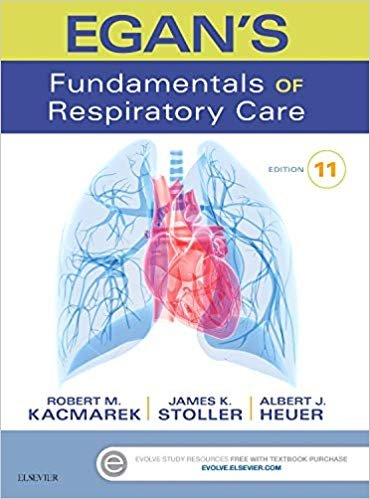
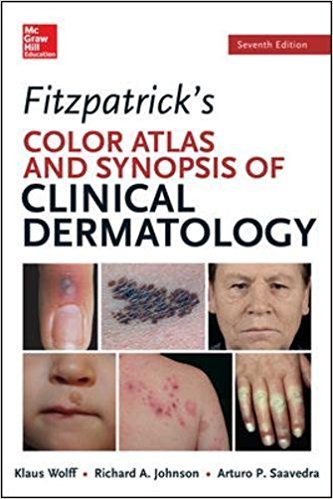
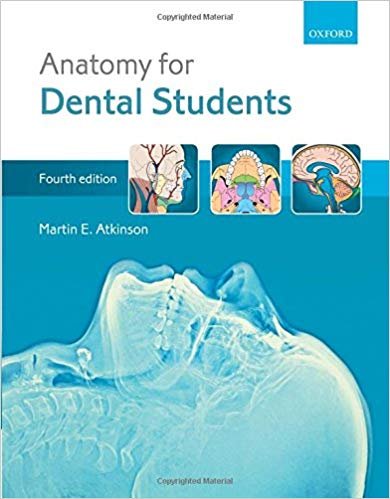
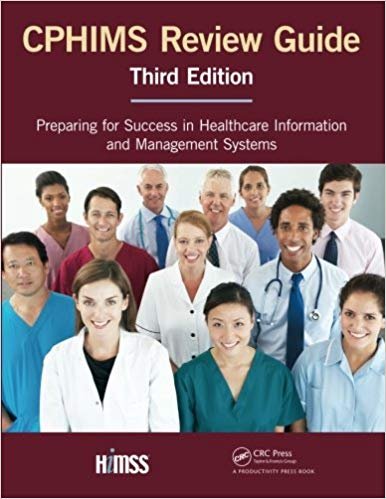


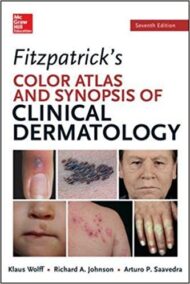




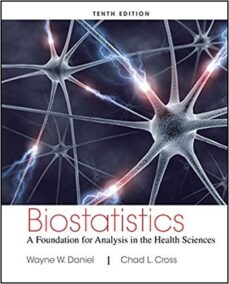
Reviews
There are no reviews yet.